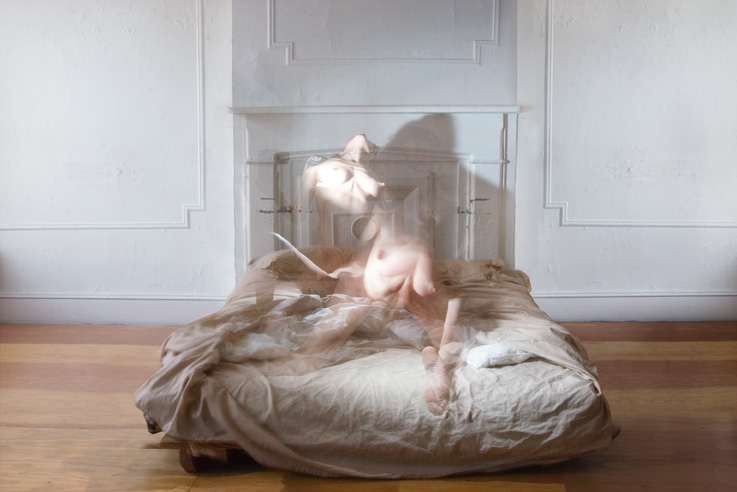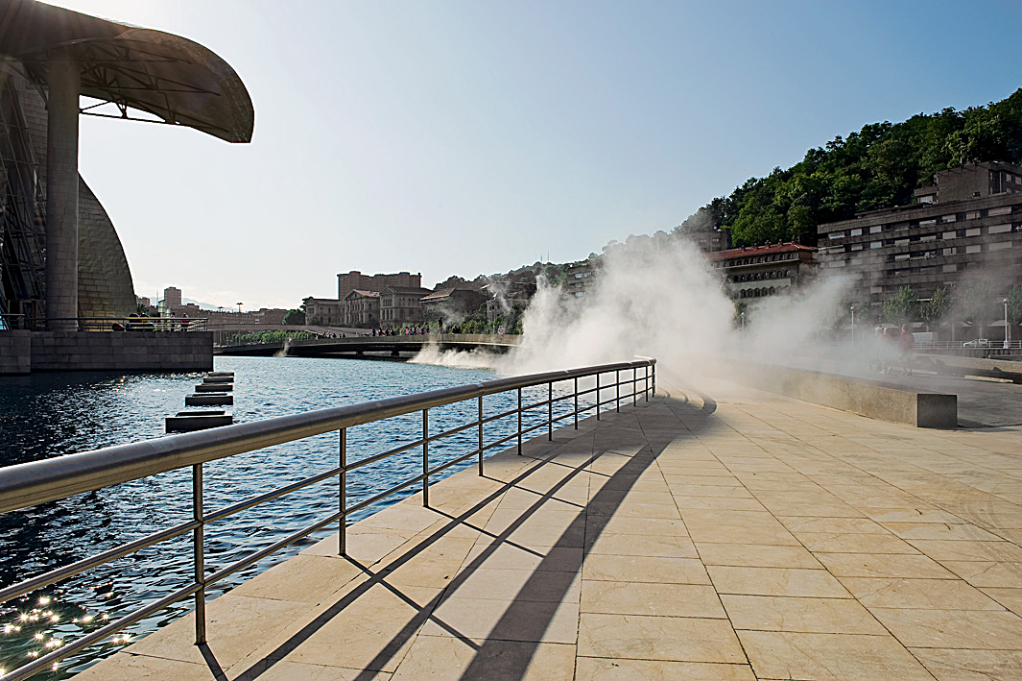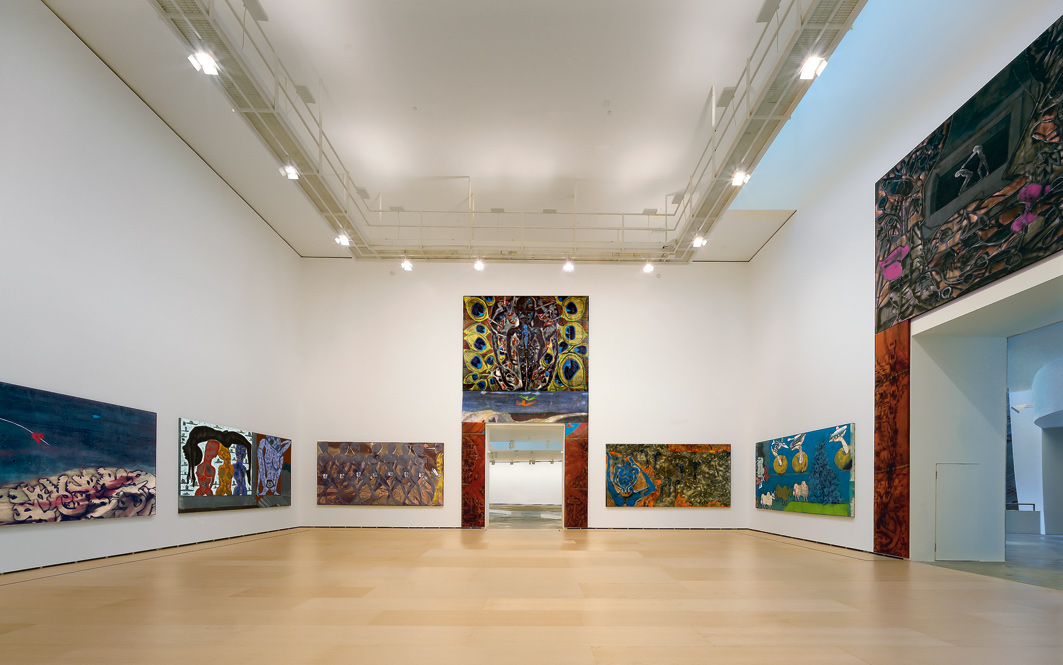Wall Drawing #831 (Geometric Forms)
1997Acrylic on wallSite-specific dimensions
In the 1960s the position that art could be generated by ideas rather than emotions was a radical one. Using mathematical and linguistic models, artists such as Hanne Darboven, Joseph Kosuth, and Lawrence Weiner began to explore the ramifications of this conceptual approach. For Sol LeWitt, this meant establishing systems of logic in the form of written instructions—such as "lines from the corner, sides, and center to points on a grid" or "all three-part variations on three different kinds of cubes"—that governed the outcome of an artwork in advance of its execution. The clarity of this process minimized the singular emphasis on the appearance of a work as a discrete object, instead mining the relationship between linguistic and visual conventions of representation. Indeed, the apparent simplicity of these textual systems, whether applied to LeWitt's modular structures or the wall drawings he began in 1968, belies a visual complexity of seemingly endless permutation and establishes a conceptual foundation for a rigorous yet rich body of work.
Traditionally, the worked surface of a drawing has been understood as the most intimate and direct record of an artist's creative process. With his wall drawings, LeWitt ensured that his autographic touch was wholly absent by leaving the execution to others. Despite their basis in impersonal written instructions, the mural surfaces of LeWitt's wall drawings nevertheless have the capacity to become quite visually sumptuous. While the early wall drawings were executed in pencil, colored pencil, chalk, or crayon, over the following decades LeWitt's directives mandated the use of inks and colored ink washes (from the early 1980s) and acrylic paint (beginning in 1997), with increasingly bold, colorful results. Relatively austere combinations of straight and curved lines in the early works also gave way to increasingly irregular, playful shapes and patterns. "When presented with the scale that walls have one must begin to engage their physical properties. The theatrical and decorative are unavoidable and should be used to emphasize the work," the artist explained. [1] Both of these qualities—theatricality and decorativeness—are evident in Wall Drawing #831 (Geometric Forms), a site-specific work that LeWitt conceived for a large gallery (Gallery 208) on the second floor of the Guggenheim Museum Bilbao in 1997, the year of the museum's opening. Among the earliest of the artist's wall drawings in acrylic paint, this work is rendered in highly saturated, vibrant tonalities of red, blue, orange, green, purple, and gray. The irregular and cropped geometric forms bend with the curved and sloping wall of the Frank Gehry-designed gallery, so that the painting both merges with and transforms its architectural setting.
1. Sol LeWitt, quoted in Andrea Miller-Keller, "Excerpts from a Correspondence, 1981–1983," in Susanna Singer et al., Sol LeWitt: Wall Drawings, 1968–1984 (Amsterdam: Stedelijk Museum, 1984), p. 19.
Source(s):
J. Fiona Ragheb. "Sol LeWitt." In Nancy Spector, ed. Guggenheim Museum Collection: A to Z. 3rd rev. ed. New York: Guggenheim Museum, 2009.
Original title
Wall Drawing #831 (Geometric Forms)
Date
1997
Medium/Materials
Acrylic on wall
Dimensions
Site-specific dimensions
Credit line
Guggenheim Bilbao Museoa
Perspectives
Wall Drawing #831 (Geometric Forms), by Sol LeWitt
Dancer and choreographer Israel Galván and curator Maite Borjabad discuss the installation of Sol LeWitt’s Wall Drawing #831. Inspired by such a unique piece, Galván cannot help but make a few dance moves.






